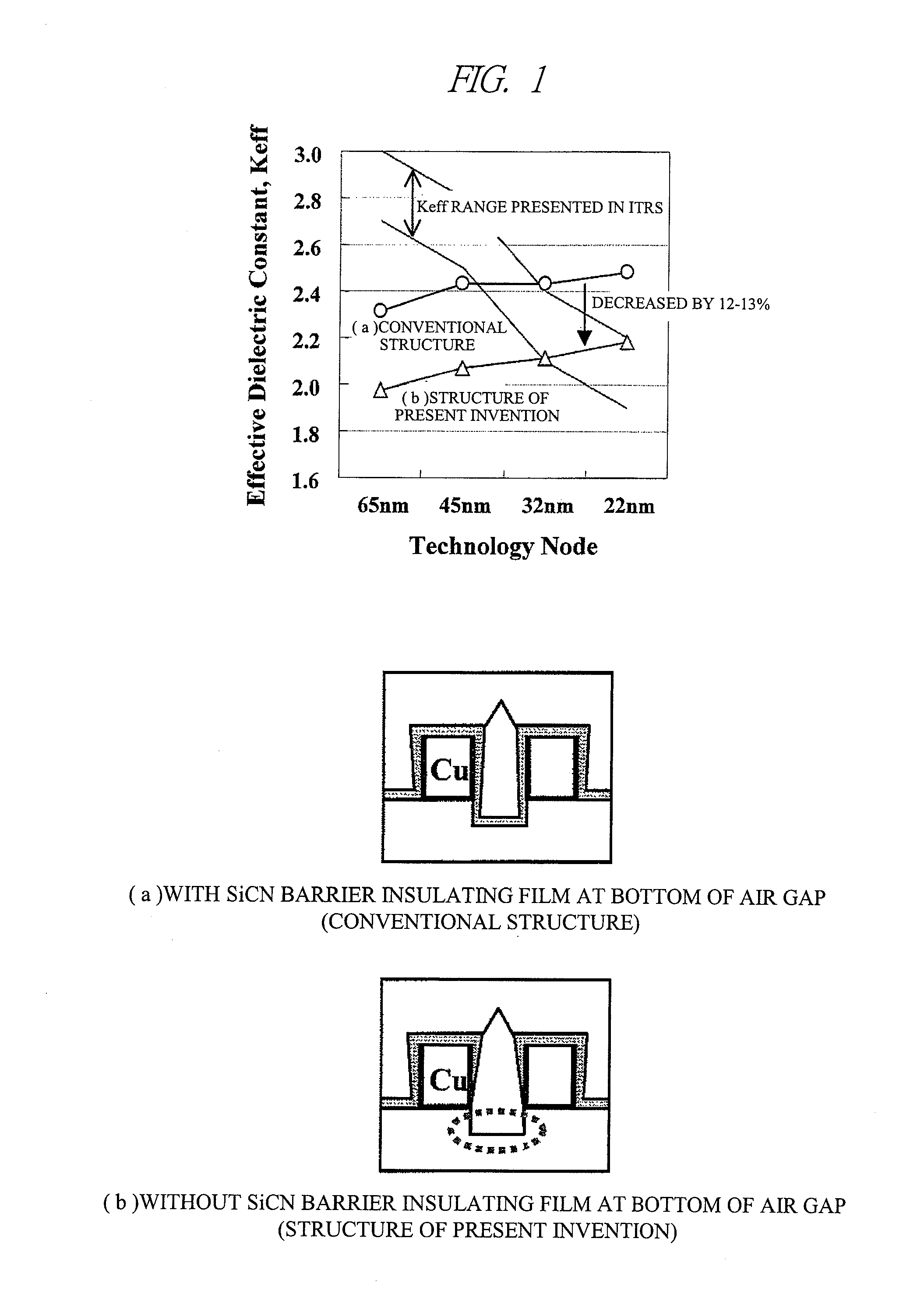Semiconductor device and manufacturing method thereof
a technology of semiconductor devices and manufacturing methods, applied in semiconductor devices, semiconductor/solid-state device details, electrical apparatus, etc., can solve problems such as difficulty in achieving effective dielectric constants, and achieve the effects of reducing capacitance variations, increasing capacitance variations, and reducing capacitance variations
- Summary
- Abstract
- Description
- Claims
- Application Information
AI Technical Summary
Benefits of technology
Problems solved by technology
Method used
Image
Examples
first embodiment
[0089]A semiconductor device and a manufacturing method thereof according to a first embodiment will be described with reference to the drawings. FIG. 2 is a plan view of principal parts in the manufacturing process of a semiconductor device, for example, Complementary Metal Insulator Semiconductor Field Effect Transistor (CMISFET) according to an embodiment of the present invention. FIG. 3 is a cross-sectional view of an A-A line in FIG. 2. As depicted in FIGS. 2 and 3, a wafer or semiconductor substrate 1 made of p-type monocrystalline silicon having a resistivity of, for example, 1 Ωcm to 10 Ωcm has isolation regions 2 formed on its main surface. The isolation regions 2 are made of silicon oxide or the like and are formed by, for example, Shallow Trench Isolation (STI) or LOCOS (Local Oxidization of Silicon).
[0090]The semiconductor substrate 1 has a p-type well 3 and an n-type well 4 formed from its main surface to a predetermined depth. The p-type well 3 is formed by, for exampl...
second embodiment
[0143]FIG. 32 is a cross-sectional view of principal parts in the manufacturing process of a semiconductor device according to a second embodiment of the present invention. The semiconductor device of the present embodiment has a multilayer wiring structure where the structure having a wiring layer and a reservoir in which air gaps are formed between adjacent wirings and these adjacent wirings are not connected via a CMP surface like the second layer wirings 26 and the third layer wirings 47 of the first embodiment and a wiring layer formed by using a general buried wiring technique are combined. In FIG. 31, up to the process of forming an insulating film 60 on an upper portion of fourth layer wirings 55, the manufacturing process is almost similar to those described with reference to FIGS. 4 to 10 and FIGS. 18 to 30 of the first embodiment, and therefore, the description thereof is omitted and the subsequent manufacturing process will be described here.
[0144]Fifth and subsequent wi...
third embodiment
[0147]FIG. 33 is a cross-sectional view of principal parts in the manufacturing process of a semiconductor device according to a third embodiment of the present invention continued from FIG. 3. Also in FIG. 33, the illustration of portions corresponding to the structure below the insulating film 17 in FIG. 3 is omitted.
[0148]The present embodiment discloses air-gap wirings whose capacitance variations are more reduced than those of the air-gap wirings described in the first embodiment by using a via interlayer insulating film made of a material different from a wiring interlayer insulating film as an etching stopper.
[0149]FIGS. 33 to 35 are cross-sectional views of principal parts in the manufacturing process of a semiconductor device continued from FIG. 2.
[0150]First, in the present embodiment, as depicted in FIG. 33A, an insulating film 67 is formed on the insulating film 17 having the through holes 18 embedded therein. For the insulating film 67, a Low-K material or an insulating...
PUM
| Property | Measurement | Unit |
|---|---|---|
| resistivity | aaaaa | aaaaa |
| dielectric constant | aaaaa | aaaaa |
| voltage | aaaaa | aaaaa |
Abstract
Description
Claims
Application Information
 Login to View More
Login to View More - R&D
- Intellectual Property
- Life Sciences
- Materials
- Tech Scout
- Unparalleled Data Quality
- Higher Quality Content
- 60% Fewer Hallucinations
Browse by: Latest US Patents, China's latest patents, Technical Efficacy Thesaurus, Application Domain, Technology Topic, Popular Technical Reports.
© 2025 PatSnap. All rights reserved.Legal|Privacy policy|Modern Slavery Act Transparency Statement|Sitemap|About US| Contact US: help@patsnap.com



